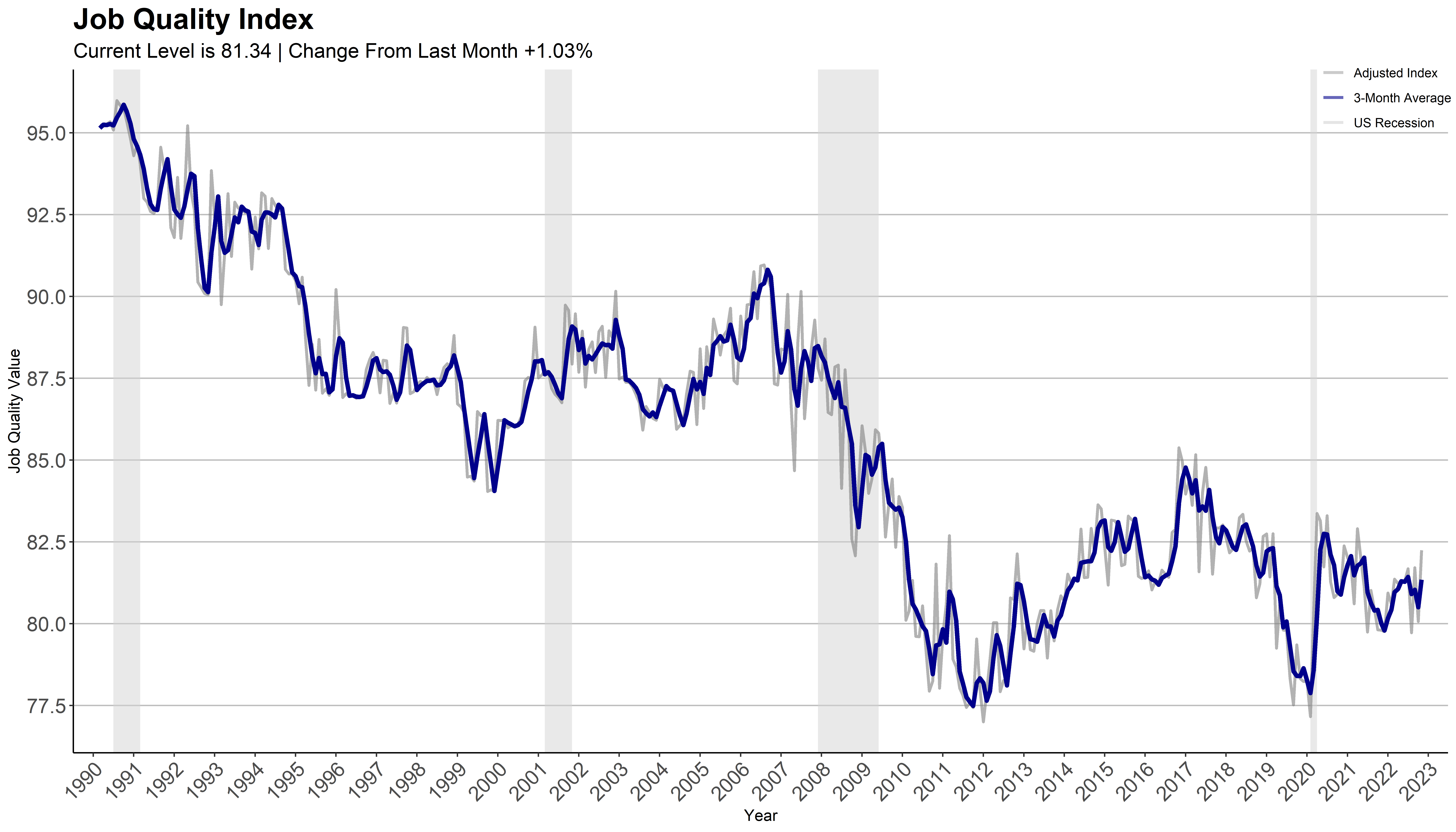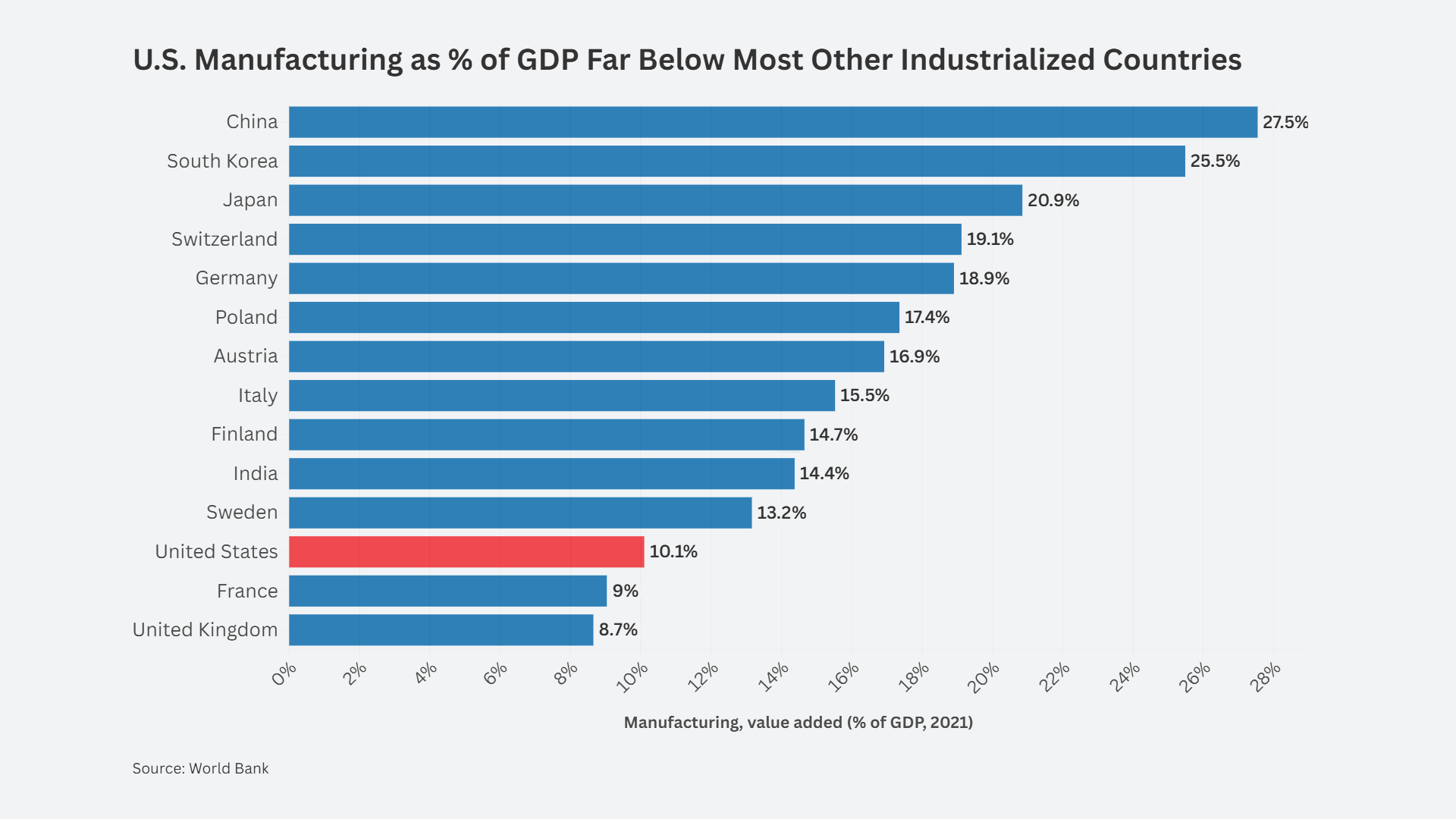WASHINGTON — The Coalition for a Prosperous America (CPA) today announced that the U.S. Private Sector Job Quality Index (JQI) rose 1.03% to 81.34 in November as employment in high-quality sectors including transportation equipment manufacturing and health care rose.
Low quality jobs, i.e. jobs that pay weekly wages below the national average for all production and nonsupervisory (P&NS) workers, fell significantly in sectors including employment services, courier services, and warehousing. The decline of employment in those sectors reflects the slowdown in the economy, which was also visible in flattish consumer sales in November.
The average weekly wage for production and nonsupervisory workers came in at $945.75, up 0.03% on the previous month and 4.61% on the year-earlier figure. According to our sector-by-sector analysis, P&NS workers in high-quality jobs saw a 2.36% reduction in average weekly pay adjusted for inflation. Low-quality P&NS workers did slightly worse, with an inflation-adjusted 3.54% fall in weekly pay. According to an earlier BLS press release, consumer price inflation was at 7.1% in November.
The Bureau of Labor Statistics reported today that the U.S. added 223,000 workers to nonfarm payrolls in December, while the unemployment rate fell to 3.5%. However, the labor force participation rate was unchanged at 62.3%.
Manufacturing employment rose by a modest 8,000 in December to reach a total of 12.934 million. The increase in jobs was dominated by motor vehicle manufacturing, up by 7.4 thousand jobs. Chemical manufacturing saw a decline of 5.7 thousand jobs.
“The fall in temporary employment and courier services employment reflect a decline in broad economic activity, yet the continued tight employment market makes it likely the Federal Reserve will continue to raise rates,” said CPA chief economist Jeff Ferry. “A sluggish economy in 2023 makes it more important than ever for the federal government to move quickly to boost domestic production in high-wage sectors like automotive and renewable energy equipment.”
The Job Quality Index measures job quality for U.S. production and non-supervisory workers by comparing workers’ weekly wages to the mean weekly wage for all non-supervisory workers. Those jobs above the mean are classified as high-quality and those below the mean are low-quality. The JQI is down 14.5% from 1990 (see Figure 1), when the current data series begins, illustrating the aggressive growth in low-quality jobs, which are low-wage and often low-hour too.
Figure 1. Job Quality Index 1990-2022














